The Path to Your Dream Job: How to Build a Better LinkedIn Profile
Understanding LinkedIn: A Professional Network
LinkedIn is the world’s largest professional network, with nearly a billion members in over 200 countries. Unlike other social media platforms like Instagram or Twitter, where people go to pass time or follow celebrities, LinkedIn has a very specific purpose: career and business growth.
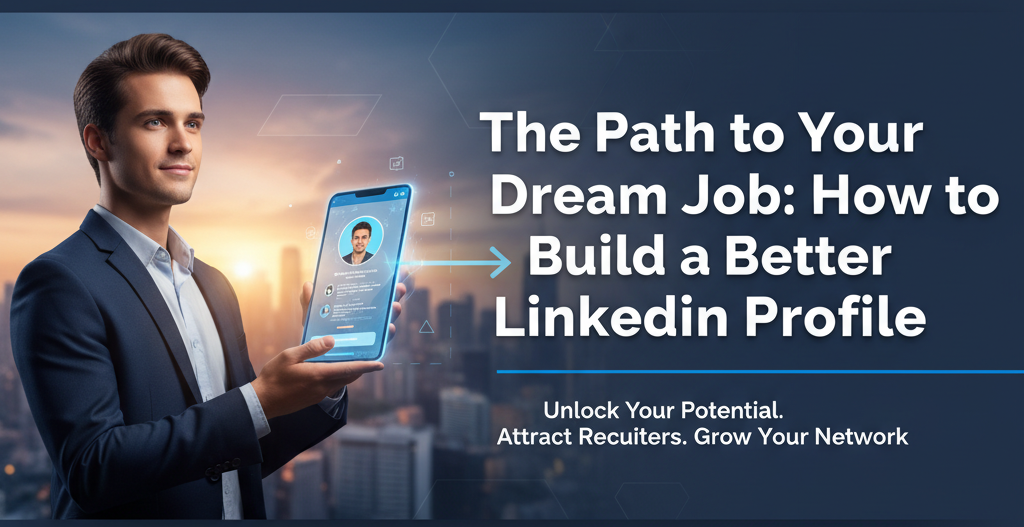
Many people mistakenly think LinkedIn is just another social media site where you can post anything. However, it’s a platform where professionals gather to talk about work, business, and their careers. The people on LinkedIn are actively looking for professional opportunities and networking. If you start an account today, you will find a million like-minded individuals in your industry who want to grow and collaborate with you.
LinkedIn is a social media platform just like Facebook, Instagram, Twitter, etc., but the difference is that LinkedIn is specially made for professionals, that’s why it is also called a professional network. Here, only work-related talks happen, and people present themselves in a professional way. LinkedIn is such a platform where you create your professional profile and share it with professionals around the world.
On LinkedIn, you can show your skills, education, experience, and achievements, and you can connect with people from your field. The biggest advantage of LinkedIn is that here you can get job opportunities, you can get clients, and you can make your network strong. Here companies also post their jobs and directly hire candidates.
Now, one important thing is that on LinkedIn, you should know how to present yourself. Just making a simple profile and leaving it is not enough; you have to brand yourself. This is called personal branding.
Who Can Benefit from LinkedIn?
Anyone who wants to grow professionally.
Students: Even as a student, you should create a strong LinkedIn profile. You can connect with other students, professors from different universities, and find valuable internships. Back when I was in college, everyone said you needed a resume. But today, the saying is, “You must have a LinkedIn profile.”
Job Seekers: As a job seeker, you can create an attractive profile to find a great job
Entrepreneurs: If you’re an entrepreneur or a business owner, LinkedIn is the perfect platform to promote your products, generate leads, and grow your business. Once you build your own brand and community, you can start selling your products and services. Remember, 90-95% of the people on LinkedIn are either employed or running their own businesses. These people are ready to spend money if they find a good product or service.
Personal Branding: Stand Out from the Crowd
In today’s job market, there’s a lot of competition. If you don’t have something that makes you stand out, or if your profile doesn’t look different from other candidates, you won’t get good results. Personal branding is what makes you different; it helps you stand out from the crowd. If you understand the concept of personal branding, you can apply it to your career everywhere, not just on LinkedIn, to achieve growth.
Branding does not only mean business brand, but also personal brand. The difference between a business brand and a personal brand is that a business brand is related to a company and a personal brand is related to an individual. If your personal brand is strong, then people will remember you, you will get opportunities, and your value will increase. On LinkedIn, you can create a personal brand which makes you look different from the crowd.
Let’s understand with an example:
You know this company: Coca-Cola. But do you know who invented it? Most people don’t. Dr. John Pemberton is known as the inventor of Coca-Cola. People don’t know him because he didn’t have a personal brand. You’ve likely used Coca-Cola products without knowing the founder’s name. This is because we only see the brand name and its advertisements on TV. Here, you don’t trust the person; you trust the company or the brand. This is called business branding.
A personal brand works in the exact opposite way. Do you know the names of the companies Tesla or SpaceX? Most people do. But do you know who owns these companies? Most people know that Elon Musk is the co-founder and CEO. You know this because his personal brand is very strong. He has so much influence that no matter what product his companies launch whether it’s a Tesla car, perfume, or a flamethrower people will buy it. This is the power of personal branding.
To truly benefit from LinkedIn, you must build a personal brand, be an active user on the platform, and connect with people.
Your LinkedIn Profile: Your Digital Identity
In the job market, hiring managers and recruiters screen candidates based on their profiles. If your profile is well-made, attractive, professional, and it matches the job description, your chances of getting a call for an interview increase significantly. However, if your profile is not professional and looks casual, you might get rejected right away.
Now the question comes: how can you create a personal brand on LinkedIn? The answer is profile building. Your profile is your digital CV + portfolio + business card. A strong profile automatically makes you powerful. To avoid making mistakes, we will focus on the Top Five Things That Will Get Your Profile Noticed.
You can create a LinkedIn account by simply signing up with your email, phone number, and password, just like you would on other platforms. I’m sure you’re intelligent enough to do that on your own.
Top 5 Points That Will Get Your Profile Noticed
When recruiters visit your profile, they look at these five things. If they find them interesting, they will spend more time on your profile. Your entire profile is a combination of these five points, and this is where most people make mistakes. If you learn these 5 points from this course, your money will be fully recovered, this is my guarantee.
These five points are:
- Profile Picture
- Headline
- Profile Summary
- Job History
Recommendations
We will take the time to properly understand these five points. You might get confused after hearing these 5 points, wondering where these other four points are shown on our profile, besides the profile picture? Let’s look at an example of a good profile. After we put all the details into it, your profile will look like this.
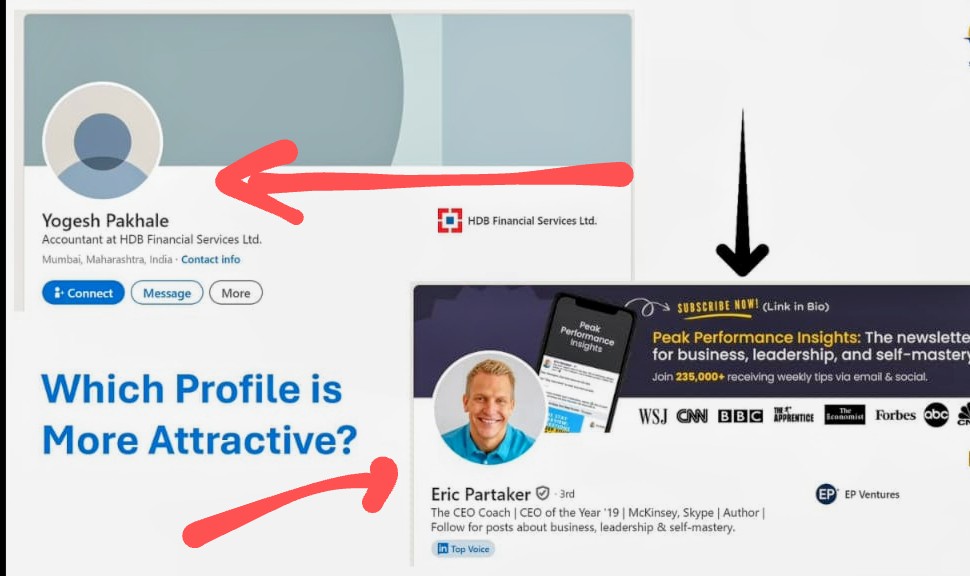
Our first glance on any profile goes to the profile picture. Here you can see a nice professional profile picture, and behind it, there is a background image, which is as important as your profile picture. After the profile and background image, comes your name and headline. After that comes your summary, followed by your job history and the recommendations. At the end, you can also add your skills. So this is how your profile looks, giving you an idea where all the five high-level things appear on your profile.
- Profile Picture & Cover Image: Your First Impression
When we meet someone, our first glance goes to their face, and we form an image of that person in our mind. In the same way, your profile picture works as your face on LinkedIn. Your profile picture and cover image make your first impression. Even after knowing this, many people make mistakes. They either don’t put a profile picture or they just put any random picture.
Important Rules for a Great Profile Picture
- High Engagement: LinkedIn profiles with a photo receive 21 times more views and 9 times more connection requests.
- Recent Photo: Always use a recent photo of yourself.
- Only Your Photo: It should be only your photo, not a group pic. If you use a group photo, recruiters won’t know who you are.
- Clear Face: Your face should take up at least 60% of the frame, so your face is clearly visible.
Professionalism: LinkedIn is a professional platform, so your profile picture must be professional. Avoid casual photos, like selfies or pictures with sunglasses. Eye Contact: Look directly into the camera. Avoid poses where you’re looking left, right, up, or down. This makes your photo more effective.
I hope you’ll follow these five rules and put your best profile picture on your LinkedIn profile. Now we’ll look at some examples of good profile pictures.
Examples of Good & Bad LinkedIn Profile Pictures
Bad Examples:
Side Pose: Shows you are not confident or certain about your life. On LinkedIn, you need to look professional and confident, not just handsome.
- Selfie: Not professional at all, shows you are not serious about your profile.
- With Sunglasses: Gives a casual vibe, which can lead to rejection.
- Group Picture: No one will understand whose profile it is.
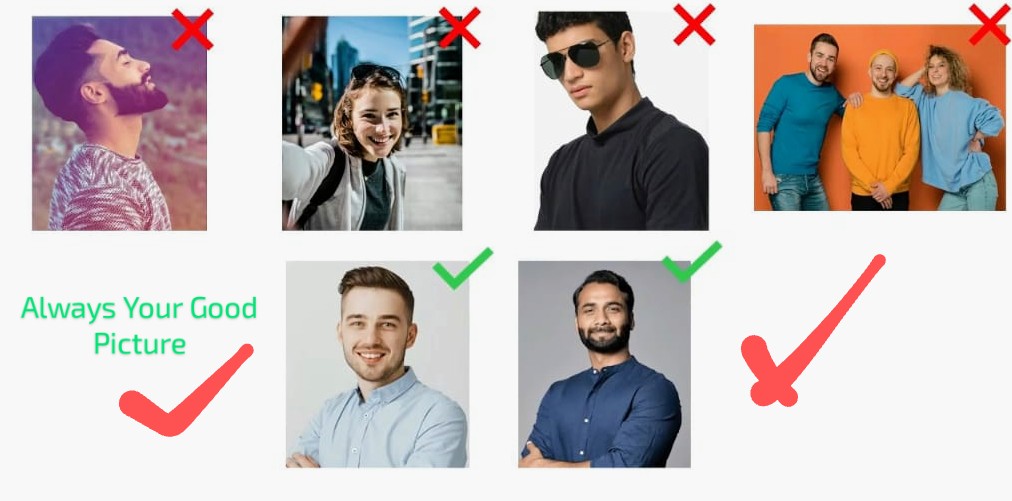
Good Examples:
- Serious Picture: An ideal picture that shows professionalism and confidence.
- Confident Picture: Shows your certainty and attitude.
- Cover Photo (Background Image/Banner)
Just like the profile picture, the cover photo is also very important. It appears directly behind your profile picture and tells a lot about you.
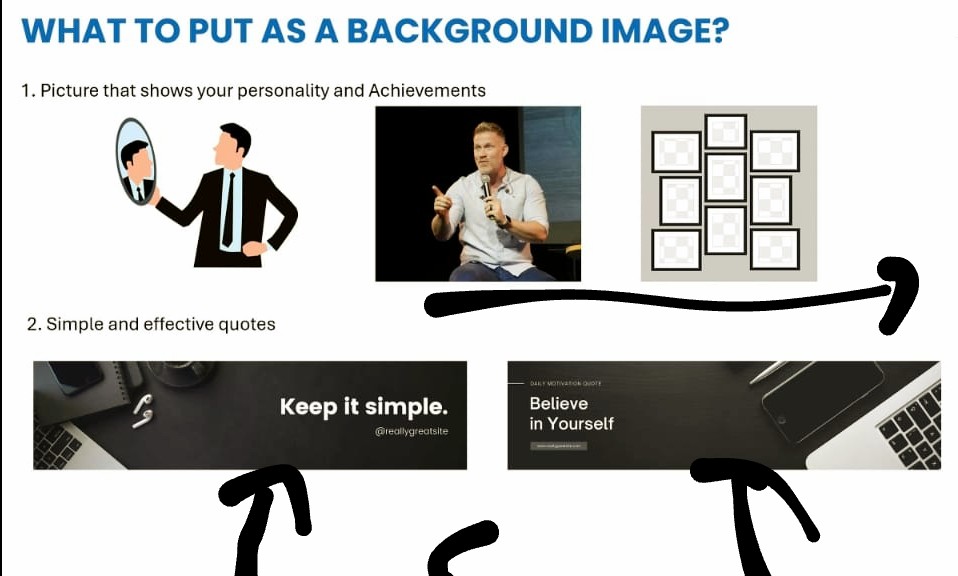
What to Put in Your Cover Photo?
Personality and Achievements: Use a photo that shows your personality and achievements. For example, a picture of you giving a speech at a conference, leading a forum, or receiving an award. You can also make a collage of such pictures.
Quote: If you don’t have such pictures, you can use a simple and effective quote that matches your personality or industry.
Look at these two profiles. Which one looks more attractive at first glance? Of course, Profile Number
2. The first profile has no profile picture or cover image. The person just created a profile with their name. In the second image, you can see how serious the person is about their profile, with an industry-related cover image and a proper profile picture. When a recruiter sees your profile, your picture and cover image are the first impression. If they are good, the recruiter will be interested in going through your entire profile.
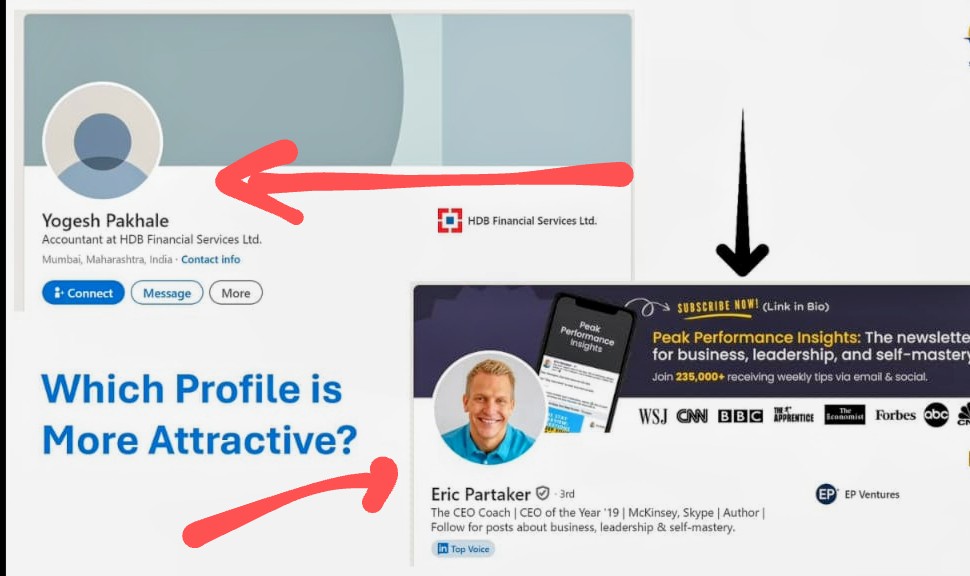
- Headline: Your Professional Snapshot
The headline shows just below your name and is the second most important thing. Most people only write their job title here, which is wrong. In the headline, you should show your skills + value.
For example, if someone is a student, instead of only writing “Student at XYZ University,” they should write: “Computer Science Student | Aspiring Data Analyst | Skilled in Python & SQL”. From this, it is immediately understood who the person is and what he does.
- Profile Summary (About Section): Your Story
Many people ignore the LinkedIn summary (also known as the About section), but it is a crucial part of your profile. It’s not that difficult to write an effective summary. An attractive summary might get you an interview call, but you won’t get the job if you’ve lied about your skills. Your summary is properly read by HR and hiring managers.
How to Write an Effective Summary
Honesty: The most important thing is to be yourself. Don’t exaggerate your skills. Whatever work you have done and whatever you know, you should write that honestly in good language.
Experience & Accomplishments: Include your experience, awards, and accomplishments in your summary. Quantify Your Accomplishments: Try to add numbers to your accomplishments. For example, “Exceeded monthly sales targets by 25% for five consecutive months, resulting in a 50 lakh increase in revenue.”
No Grammatical Mistakes: Your summary is your first impression. If you have a spelling mistake, you have already spoiled your first impression, and the recruiter will move to the next candidate.
Keywords: Use keywords that recruiters might be using to search for candidates. For example, if you want to work in sales, keywords like “Zonal Sales Manager,” “Divisional Sales Manager,” etc., should be in your summary.
- First Person: Write in the first person, as if you are talking about yourself. This shows confidence.
- Short Paragraphs/Bullet Points: Use small paragraphs or bullet points to make your summary easy to read.
- Call to Action: Always add a call to action at the end of your summary. Tell people how they can contact you, like “Feel free to reach out to me via this email.
Summary Templates
Summary templates vary from person to person. Here are two basic templates:
Template 1: For Job Seekers (with experience)
“I have [Number] years of experience as a [Job Title] at [Company Name]. I’m passionate about [Your Skill] and driving sales. My skills include [Skills like Word, Excel, etc.]. I’m also passionate about [Your Hobby]. Feel free to email me at [Your Email].”
Template 2: For Students/Freshers
“I love finding creative solutions to problems. As a kid, I loved tinkering with broken things, figuring them out and fixing them again. I graduated from [College Name] where I learned to apply critical thinking and problem-solving strategies. If you’re interested in contacting me regarding a position with your company, please email me at [Your Email].
- Experience (Job History): Show Your Impact
This is where you give details about yourself. This is your chance to tell your story in 3–4 short paragraphs. In a good summary, these things should be included: who you are, what you do, what value you add, and what your goals are. If you are a student and you don’t have any formal job, then you can add internships, freelance work, volunteering, or projects. The main point is to show what you have done, not only where you studied.
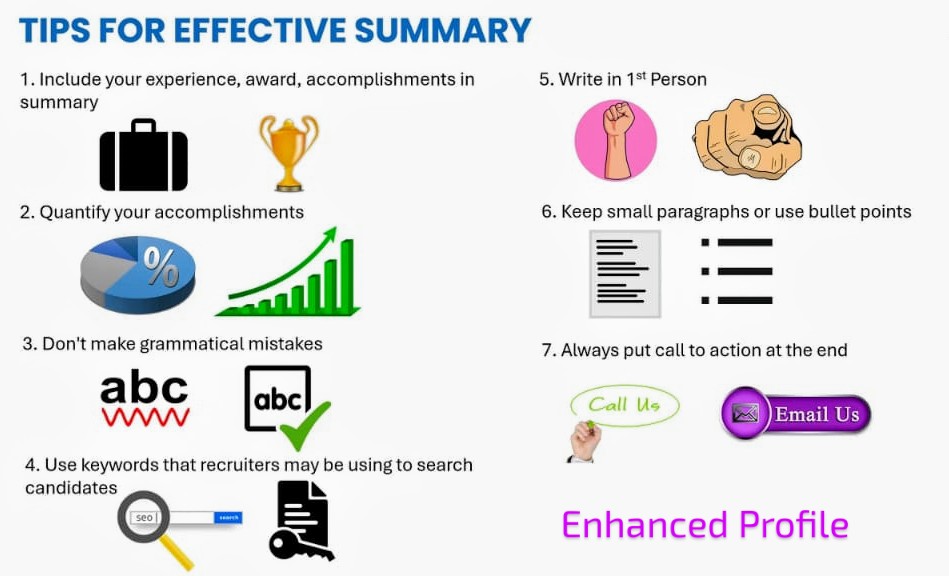
Tip: For each role, write bullet points which show your impact and results, not only responsibilities.
- Recommendations & Endorsements: Build Credibility
Recommendations are a very important feature that few people know about, and even fewer use. They can take your profile to the next level. Whether you are a job seeker, a businessman, or a freelancer, this is very important for you.
What is a Recommendation?
A recommendation is an endorsement of your work. When your boss, client, or colleague writes a recommendation for you, it makes your profile much stronger. The person who recommends you can be a former boss, a client whose project you completed on time, or colleagues. In simple language, a recommendation means praising your work on your profile.
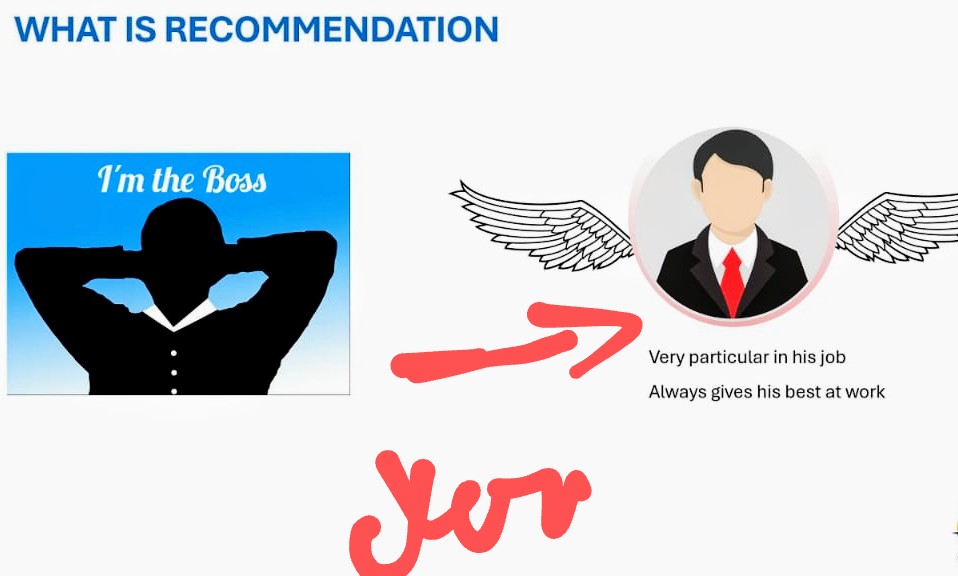
How to Ask for a Recommendation on LinkedIn
Go to the profile of the person you want to ask. Click on the “More” option next to the message button. From the window that opens, select “Request recommendation.” You will then choose your position from your experience and send the request. The person will receive a message from LinkedIn with a direct option to “Write a recommendation.
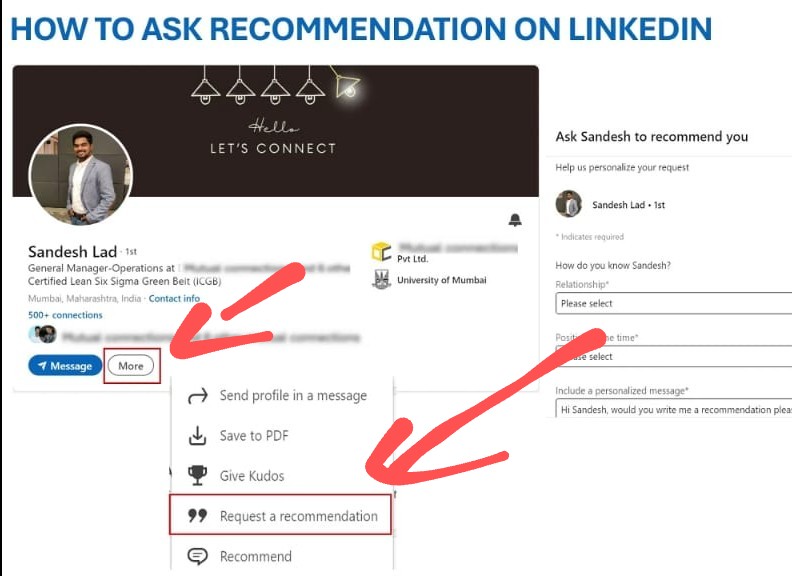
Benefits of Recommendations
If you are a professional, a recommendation from your senior on a professional platform like LinkedIn about your work shows your profile as very professional.
If you are a freelancer, and your client writes a recommendation for you that you made a great website on time, it gives assurance to potential clients, increasing your chances of getting orders or leads.
Important Note: Do not write or ask for fake recommendations. A professional in a good position will not write a fake recommendation for you on LinkedIn because it can harm their own image. Always ensure recommendations are honest.
Where are Recommendations Displayed?
When someone writes a recommendation for you, it shows up right below your profile in the “Recommendations” section.” Here you can see the profile picture of the person who gave the recommendation, their designation, and the lines they wrote about you. A recommendation can take your profile to the next level.
Along with your profile photo, your cover image or banner also matters. You can use it to highlight your skills, add a personal tagline, or show your achievements. On LinkedIn, your profile is not only a CV; it is your personal branding tool which makes you powerful and brings you opportunities.
Achieving Professional Growth with Your LinkedIn Profile
By following all these methods that I have told you, you can make your LinkedIn profile very professional. You can generate sales from your LinkedIn profile. You can get your desired job from there. You just have to apply all these methods, and after that, you will see that your growth on LinkedIn will be visible. LinkedIn will grow you, LinkedIn will show your profile to people, by which you’ll get more popular and also get recommendations. And you can also run your business with all these methods that I have told you, and if you want, you can also get your dream job from it.

